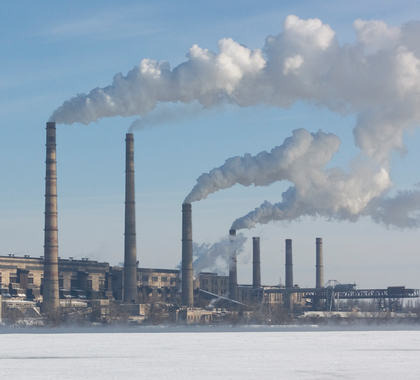Speakers on the panel on “Fossil Fuels and Human Health” at The Heartland Institute’s 12th International Conference on Climate Change discussed misconceptions about the health effects of regulated pollutants and climate change.
In his presentation, titled “EPA’s Human Experiments With Particulate Matter: Proof of Government Science Corruption,” Steve Milloy, publisher of JunkScience.com, strongly criticized the Environmental Protection Agency (EPA) for carrying out experiments on human subjects, exposing them to a substance EPA says can kill “within hours.”
For more than two decades, EPA has pushed for strict regulation of PM 2.5 particulate matter, or soot, Milloy said. EPA has gone to great lengths to emphasize particulate matter poses a threat to human health, even though it has failed to document any cases of people being harmed by PM 2.5.
Milloy noted EPA has written there is “no safe level of exposure to PM 2.5” and people exposed to it can “die within hours,” with those at greatest risk being people over the age of 70 and children.
If this is true, Milloy asked, why does EPA expose human test subjects to PM 2.5 levels far higher than they will ever experience in the environment? EPA assures volunteers participating in the experiments they have nothing to fear, yet it tells the public PM 2.5 is highly dangerous, Milloy said.
EPA ‘Gas Chamber’
Some EPA experiments have pumped exhaust from an idling diesel-powered truck into room where volunteers, young and old alike, are sitting, Milloy said.
“The room is essentially a gas chamber,” Milloy said. “I don’t know any other word for it. It’s a gas chamber.”
Even though EPA claims PM 2.5 is killing people daily, the agency has never identified a single individual who died prematurely from particulate matter pollution. Milloy said. He said the data EPA has provided lacks independent verification and contradicts evidence from its own tests and research carried out by outside scientists indicating PM 2.5 is not harming human health.
“PM 2.5 is the most important regulatory science issue in existence today, more important than carbon dioxide, because the Obama administration’s Clean Power Plan and other climate rules are based on the notion that PM 2.5 kills people, not carbon dioxide,” said Milloy.
‘Trivial’ Risk
Epidemiologist and physicist James Enstrom, president of the Scientific Integrity Institute, also criticized EPA’s claims of PM 2.5 dangers.
An adult will inhale the equivalent of one teaspoon of PM 2.5 in an 80-year lifetime, Enstrom said, a risk he described as “trivial.” EPA, in promoting the PM 2.5 scare, regularly ignores data that do not support its PM 2.5 policy.
“There is a strong case that fine particulate matter does not cause premature death,” said Enstrom.
Enstrom went on to discuss the virtual blackout of media and scientific journals on publishing or citing research that refutes EPA’s PM 2.5 claims.
“No one is holding EPA, the American Cancer Society, and the Health Effects Institute, among other groups and agencies, accountable for claiming PM 2.5 is deadly while not releasing the data to support such claims,” said Enstrom. “Someone needs to hold them accountable.”
‘Winter Is a Killer’
Dr. John Dale Dunn, a board-certified medical doctor in experimental medicine and medical law, explained why colder climates are more damaging to human health.
“The biosphere likes warmth,” said Dunn. “Winter kills 10 percent more people around the world than summer. Winter is a killer. Even in places with moderate climates, death rates go up when temperatures go down.”
Part of the reason for this, Dunn said, is cardiovascular and respiratory problems increase in winter.
“Life expectancy is longer if you are born in the summer, because your body is subjected to less stress during the first year of life,” Dunn said.
History is replete with plagues and disease outbreaks killing millions of people during winter or extended cold periods such as little ice ages, Dunn said. By contrast, deaths from heat waves are largely attributable to housing that is inadequately cooled during the summer, he said.
“People spend most of their time indoors,” Dunn said, underscoring the importance of fossil fuels in maintaining healthy indoor temperatures.
Bonner R. Cohen, Ph.D. ([email protected]) is a senior fellow at the National Center for Public Policy Research.





